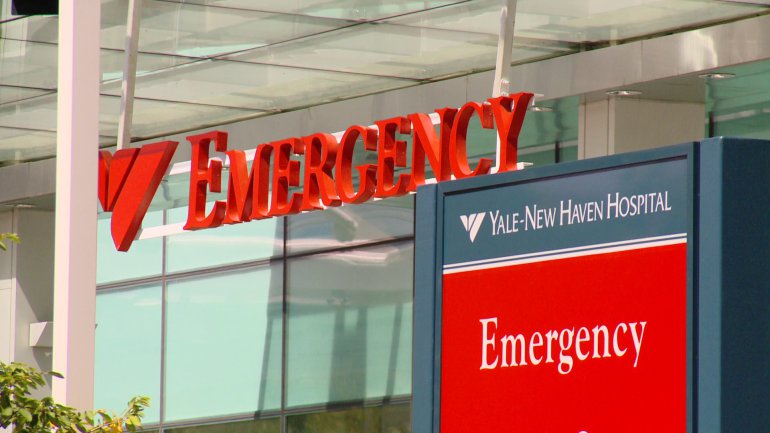The number of “adverse events” occurring at Connecticut hospitals rose 7% in 2018, compared with the previous year, with a growing number of patients suffering serious injury or death associated with falls, according to a new state report.
Overall, the total number adverse events, or medical errors, reported by hospitals rose to 376, from 351 in 2017, according to the state Department of Public Health (DPH).
Of the 29 categories tracked, tallies rose in 12, declined in seven and remained flat in 10.
“I’m very discouraged by the report,” said Lisa Freeman, executive director of the Connecticut Center for Patient Safety. “Some of these numbers, they give me chills, they’re so frightening. Something’s not working. What are we doing to figure out what’s not working and why it’s not working?”
In 2018, there were 106 reported incidents in which a patient was injured or died as a result of a fall, up from 84 the previous year. That’s a 26% increase.

Yale New Haven Hospital reported 55 medical errors, but its rate per 100,000 patient days was 12.7.
Cases of death or serious injury due to the wrong surgical procedure performed on a patient more than doubled, from 3 in 2017 to 7 in 2018; and cases where a foreign object was retained in a patient after a surgery or procedure rose 65%, from 17 in 2017 to 28 last year.
“It’s frightening that patients have to worry about this when they’re going in for procedures,” Freeman said, especially since hospitals have been implementing high-reliability standards for years. “Some of [these errors] are wrong and dangerous…but some of them are catastrophic.”
Hospitals continually strive to improve patient safety and reducing the number of falls, in particular, will be an area of focus in the coming year, said Dr. Mary Cooper, chief quality officer and senior vice president for clinical affairs at the Connecticut Hospital Association.
“That is a problem nationally,” Cooper said of the number of fall-related injuries. “Everywhere has seen that number go up. It’s partly because of our aging population.”
Hospitals continue to seek ways to reduce falls, she said. Over the next year, hospitals will focus on strategies such as early mobility, or getting people up and moving soon after procedures, which has been proven to reduce fall risks; as well as trying to limit sedating medications patients are taking.
Hospitals also will work with bedside staff to educate them about reducing other risk factors, Cooper said, such as making sure patients’ phones and other items are located nearby with no obstacles blocking them.
There were some categories that showed improvement in the DPH report. The number of Stage 3, Stage 4 or unstageable pressure ulcers dropped from 208 in 2017 to 194 in 2018; and instances of serious injury or death associated with burns fell from 8 to 2.
“We’re really, really pleased with [the decline in the number of pressure ulcers]. I’m really proud of the hospitals in terms of the efforts that have happened, because that’s really a result of efforts of people that are at the bedside.”
— Dr. Mary Cooper
Staff have become more knowledgeable and proactive about reducing risk factors, making sure to keep bed linens dry and moving patients so they aren’t lying in one spot, Cooper said.
Most of the adverse events in 2018 (314, or 84%) occurred at acute-care or children’s hospitals. Most errors (225, or 60%) affected patients ages 65 or older; and adverse events were more likely to affect male patients (59%) than female ones (41%), according to the report.
As expected, some of the state’s largest hospitals reported the highest number of total adverse events: Yale New Haven Hospital, 55; Stamford Hospital, 31; Hartford Hospital, 28; St. Francis Hospital and Medical Center, 27; and Bridgeport Hospital, 21.
The hospitals with the highest rates of events per inpatient days were Milford Hospital with 70.2 per 100,000 patient days; Sharon Hospital, 55; and Stamford Hospital, 43.
Among the 28 acute-care hospitals, Day Kimball Healthcare was the only one to report zero adverse events in 2018. MidState Medical Center and Rockville General Hospital reported one each.
Hospitals, which have been required to report adverse events to the state since 2002, have the opportunity to submit comments, which are included in the DPH report.
Since 2017, all hospitals in the state have worked with a Patient Family Advisory Council – a group of hospital staff, patients’ family members and patient advocates – to identify and focus on patient-centered approaches to care, Cooper said.
“It remains an activity that we embrace along with our patients,” she said. “They really help us identify things that we may not be aware of. They continue to be partners in helping us to improve.”
While it’s crucial for patients to be involved, hospitals need to do more, said Freeman.
“We need a convening of people, just to share ideas as to why this could happen and [discuss] what can we try that we haven’t tried yet, because the status quo just is not working,” she said. “It just can’t go on. We really need to jump in because it’s going to become irreparable. Patients are in a very compromised position.”